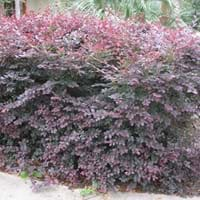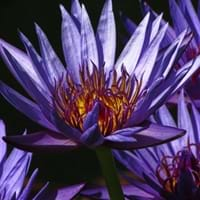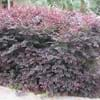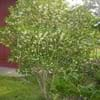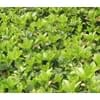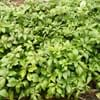Life Span
Perennial
Perennial
Type
Broadleaf Evergreen
Herbs
Origin
China, Japan
Eastern Africa
Types
Little Rose Dawn, Hines Purpleleaf, ‘Shang-hi
Not Available
Habitat
gardens, Hillside, open Woodlands, Roadsides, Rocky areas, Stream side, Woodlands
Lowland, Ponds
USDA Hardiness Zone
6-9
10-11
AHS Heat Zone
Not Available
Not Available
Sunset Zone
21,22
Not Available
Habit
Oval or Rounded
Oval or Rounded
Flower Color
White
Blue, Dark Blue, Yellow, Yellow green
Flower Color Modifier
Bicolor
Bicolor
Fruit Color
Brown
Light Green
Leaf Color in Spring
Green, Bronze
Dark Green, Green
Leaf Color in Summer
Green
Dark Green
Leaf Color in Fall
Green
Green, Orange, Yellow
Leaf Color in Winter
Green
Green
Leaf Shape
Ovate
Broadly Ovate
Plant Season
Spring, Summer, Fall, Winter
Spring, Summer, Fall, Winter
Sunlight
Full Sun, Partial Sun, Partial shade
Full Sun, Partial Sun
Type of Soil
Loam
Clay, Loam
The pH of Soil
Acidic, Neutral
Acidic, Neutral, Alkaline
Soil Drainage
Average
Average
Bloom Time
Early Spring, Late Winter
Early Spring
Tolerances
Drought
Pollution, Drought, Soil Compaction
Where to Plant?
Container, Ground
In Water, Pot
How to Plant?
Seedlings, Transplanting
Corms or bulbs, From Rhizomes, Seedlings
Plant Maintenance
Low
Medium
Watering Requirements
Do Not over Water
Plant grows in water
In Summer
Lots of watering
Lots of watering
In Spring
Consistently
Moderate
In Winter
Ample Water
Average Water
Soil pH
Acidic, Neutral
Acidic, Neutral, Alkaline
Soil Type
Loam
Clay, Loam
Soil Drainage Capacity
Average
Average
Sun Exposure
Full Sun, Partial Sun, Partial shade
Full Sun, Partial Sun
Pruning
Prune to control growth
Remove damaged leaves, Remove dead branches, Remove dead leaves
Fertilizers
All-Purpose Liquid Fertilizer, Fertilize three times a year
All-Purpose Liquid Fertilizer
Pests and Diseases
Bacterial Gall
Lily Beetle, Red blotch, Sap-Sucking Insects
Plant Tolerance
Drought
Drought
Flower Petal Number
Single
Single
Foliage Texture
Medium
Not Available
Foliage Sheen
Matte
Glossy
Attracts
Not Available
Aphids, White bugs
Allergy
Not Available
Diabetes, Nausea
Aesthetic Uses
Showy Purposes
Beautification, Hanging Basket, Showy Purposes
Beauty Benefits
Not Available
Not Available
Environmental Uses
Not Available
Air purification
Medicinal Uses
No Medicinal Use
Anxiety, Combats Stress, Diarrhea, Improve circulation, increase memory, Soothing and relieving pain
Part of Plant Used
Whole plant
Leaves, Root, Stem
Other Uses
Used as Ornamental plant
Oil is used in perfume, soaps, creams, etc., Traditional medicine, Used as Ornamental plant, Used for its medicinal properties
Used As Indoor Plant
No
Yes
Used As Outdoor Plant
Yes
Yes
Garden Design
Container, Feature Plant, Foundation, Hedges, Mixed Border, Screening, Wind Break
Bog Garden, Water Gardens
Botanical Name
LOROPETALUM chinense
Nymphaea caerulea
Common Name
Loropetalum, Chinese fringe flower
Blue Lotus, Blue Egyptian lotus
In Hindi
Loropetalum
ब्लू लोटस
In German
Loropetalum
Blue Lotus
In French
Loropetalum
Blue Lotus
In Spanish
Loropetalum
Blue Lotus
In Greek
Loropetalum
Blue Lotus
In Portuguese
Loropetalum
Blue Lotus
In Polish
Loropetalum
Blue Lotus
In Latin
Loropetalum
Blue Lotus
Phylum
Spermatophyta
Magnoliophyta
Class
Dicotyledonae
Magnoliopsida
Order
Saxifragales
Nymphaeales
Family
Hamamelidaceae
Nymphaeaceae
Genus
Loropetalum
Nymphaea
Clade
Angiosperms, Core eudicots, Eudicots
Angiosperms
Tribe
Not Available
Not Available
Subfamily
Not Available
Not Available
Number of Species
Not Available
Not Available
Difference Between Loropetalum Chinese and Blue Lotus
If you are confused whether Loropetalum Chinese or Blue Lotus are same, here are some features about those plants to help you choose better. Many people think that these two plants have the same characteristics, but one can see Loropetalum Chinese and Blue Lotus Information and learn more about it. Fertilizers required for proper growth of Loropetalum Chinese are All-Purpose Liquid Fertilizer and Fertilize three times a year, whereas for Blue Lotus fertilizers required are All-Purpose Liquid Fertilizer. Hence, one should know the basic difference between Loropetalum Chinese and Blue Lotus if you are planning to have them in your garden to enhance its beauty.
<
Flowering PlantsImportance of Loropetalum Chinese and Blue Lotus
Want to have the most appropriate plant for your garden? You might want to know the importance of Loropetalum Chinese and Blue Lotus. Basically, these two plants vary in many aspects. Compare Loropetalum Chinese and Blue Lotus as they differ in many characteristics such as their life, care, benefits, facts, etc. Every gardener must at least have the slightest clue about the plants he wants to plant in his garden. Compare their benefits, which differ in many ways like facts and uses. The medicinal use of Loropetalum Chinese is No Medicinal Use whereas of Blue Lotus is Anxiety, Combats Stress, Diarrhea, Improve circulation, increase memory and Soothing and relieving pain. Loropetalum Chinese has beauty benefits as follows: Not Available while Blue Lotus has beauty benefits as follows: Not Available.
Compare Facts of Loropetalum Chinese vs Blue Lotus
How to choose the best garden plant for your garden depending upon its facts? Here garden plant comparison will help you to solve this query. Compare the facts of Loropetalum Chinese vs Blue Lotus and know which one to choose. As garden plants have benefits and other uses, allergy is also a major drawback of plants for some people. Allergic reactions of Loropetalum Chinese are Not Available whereas of Blue Lotus have Diabetes and Nausea respectively. Having a fruit bearing plant in your garden can be a plus point of your garden. Loropetalum Chinese has no showy fruits and Blue Lotus has no showy fruits. Also Loropetalum Chinese is not flowering and Blue Lotus is not flowering . You can compare Loropetalum Chinese and Blue Lotus facts and facts of other plants too.
